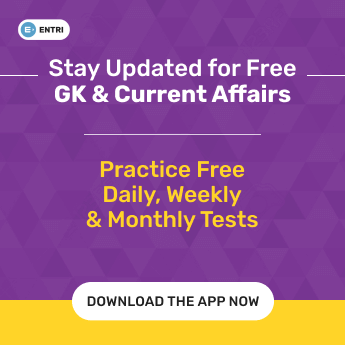Table of Contents
The solar system is a group of objects that interact with one another, the fundamental interaction for each object being the one it has with the Sun. The Solar System consists of the sun and everything that orbits the sun, like the eight (once nine) planets we all learnt from elementary school. But the main planets, as diverse and fascinating as they are, are just the beginning. Earth’s neighbors in space include comets, asteroids, dwarf planets, mysterious moons and many more strange things.
Scientists have found out ice-spewing volcanoes on Pluto, whereas Mars is home to a truly “grand” canyon the size of the United States. There can even exit a big, undiscovered planet hiding somewhere after Neptune. Read on for some of the strangest facts about the solar system.
Solar System and its Amazing Facts
1. The Solar System has Eight Planets
The Solar System is all the planets and other things in space that orbit (go around) our sun.
This consists of the planets Earth, Mercury, Venus, Mars, Jupiter, Saturn, Uranus and Neptune as well as the dwarf planet Pluto, asteroids and comets.
The planets are in the order Mercury, Venus, Earth, Mars, Jupiter, Saturn, Uranus, Neptune and Pluto.
Grab Latest Study Materials! Register Here!
2. Earth is only a very small part of the Solar System
Earth is a huge place but within the solar system it is really small. It would take 1.3 million planets of the size of Earth to fill up the sun. Earth is much smaller compared to planets like Jupiter and Saturn.
3. The Solar System formed 4.6 Billion years ago
The Solar System was formed 4.6 billion years ago from a cloud of gas and dust called the solar nebula. A shock wave from a nearby supernova (big star) explosion probably started it. The Sun formed in the center, and the planets formed around it.
Attempt Free Mock Test! Download Entri App!
4. The Solar System is part of The Milky Way
The solar system is part of the Milky Way. There are almost 250 to 500 billion stars in our Milky Way galaxy. That’s at least 30 times more stars in the Milky Way than there are people on Earth. There are over 700 known systems of planets orbiting stars.
5. The Sun is 93 million miles from the Earth
That’s the same as taking 1000 trips to Australia. Even though it’s so far away the light from the Sun only takes 8 minutes to reach the Earth.
Grab Latest Study Materials! Register Here!
6. All planets and the Sun in the Solar System are shaped like balls
Earlier people thought the Earth was flat. Now we know and can prove through satellite pictures, that it is a sphere. All planets, as well as the Sun, are balls too.
7. Planets in our Solar System are different temperatures
The hottest planet is Venus with an average temperature of 460°C and the coldest planet is Uranus with an average temperature -220°C. By comparison Earth’s average temperature is 15°C.
8. There are 181 moons in The Solar System
Scientists are always discovering more moons in the Solar System and arguing over whether Saturn or Jupiter have more moons. Currently Jupiter and Saturn both have 53 confirmed moons but they also both have more than 30 moons NASA haven’t confirmed.
There is also 552,894 asteroids and 3,083 comets in The Solar System.
9. You can see Venus from Earth
You can see some of the Solar System from Earth. For example we have all seen the sun and the moon. You can also sometimes see Venus, which is also known as the evening or morning star. Yellow clouds made of sulfur cover the entire planet that makes the light from the sun to reflect off the surface which makes it visible at night. It is usually the first ‘star’ you will spot.
This makes Venus the second brightest object in the night sky after the Moon.
10. Neptune was the last planet to be discovered in The Solar System
Neptune was the last planet to be discovered. On the night of 23rd September 1846 astronomers discovered Neptune through a telescope.
11. Mercury is shrinking.
Like Earth, Mercury experiences tectonic activity. Pictures taken of the planet have indicated that the surface is changing. The planet has a solid inner core that’s surrounded by a liquid metal outer core, which is in the process of cooling. Every rocky planet is still cooling from when they initially emerged. And as the liquid parts of Mercury’s core become solid, there’s contraction, leading to land shifting and a smaller planet overall.
12. A block of lead on Venus would melt like a block of ice on earth.
The surface temperature on the second planet from the sun is around 900°F. Even spacecraft that are sent to Venus aren’t able to hold on to the environment for long. The Soviet Union’s Venera 13 craft landed on Venus in 1982 and lasted just about two hours. Even though before its end, Venera was able to send back the first color pictures of the planet and analyze some of its soil.
13. Rocks from space have been found all over the planet Earth
In 1996, Geologist Aly Barakat found one rock in the Sahara Desert. It was named the “Hypatia Stone” and its unique chemical composition has been studied extensively. Geologists have never seen anything like that, even in meteorites or other planets. In 2018, researchers presumed that the Hypatia stone is older than our solar system. It contains elements you learned in chemistry class, like nickel, phosphorus, carbon, iron, aluminum, and silicon. But they are part of compounds that are unique, or appear together in odd ways. As one of the authors of that research explained to Popular Mechanics, “We think that many compounds (polyaromatic hydrocarbons, silicon carbide, nickel phosphide compound, native metal inclusions) are presolar. The assembly probably occurred in the early solar nebula.”
Attempt Free Mock Test! Download Entri App!
14. Jupiter is massive.
It’s large enough to fit all the rest of the planets inside it. That is it would take 1300 Earths to fill up the inside of Jupiter.
15. Jupiter’s red spot changes in size.
Even Jupiter’s red spot is larger than Earth sometimes. The red spot is a storm containing winds up to 400 mph that heats the atmosphere above it to 2400°F, and its size isn’t constant.
16. The dwarf planet Eris was indirectly responsible for Pluto’s demotion to a dwarf planet.
Eris, discovered in 2005, is comparable in size to Pluto, which put astronomers into a confusion—they worried about how many newly discovered bodies orbiting the sun might have to be considered planets. After Eris’s discovery, the International Astronomical Union created new planet standards: “To be considered a planet now, a celestial body must be round, orbit the sun, and clear its orbit of smaller objects.”
17. Another dwarf planet named Haumea was found around the time Eris was discovered.
Haumea is a weird-looking rock; it spins so fast that it’s shaped like a “football” or “plump cigar,” as NASA describes it. Haumea completes a rotation in less than four hours.
Grab Latest Study Materials! Register Here!
Amazing facts about Solar System
1. One object in our solar system orbits the Sun backwards.
In 2008, astronomers found out an object that orbits the sun at about a 104-degree tilt. Technically, this means that the 30-mile-wide object is orbiting backwards. The team that found it gave it the name Drac, based on the myth that Dracula could walk up walls.
2. Drac was found in the Kuiper Belt.
The Kuiper belt is an area of our solar system after Neptune that consists of a lot of icy objects; it’s also where Pluto is located.
3. Neptune has a moon that’s a lot like Pluto.
Triton is probably one of those icy Kuiper Belt objects that at some point got trapped by Neptune’s gravity and has been orbiting it ever since. Triton has other distinctive features: It orbits Neptune in the opposite direction than the planet is rotating, and it has geysers that erupt.
4. Mercury retrograde is all about perspective.
When Mercury is in retrograde, it looks like it’s moving backwards to people on Earth. This is just a perspective issue. Mercury takes 88 Earth days to rotate the sun, whereas Earth takes 365. So as Mercury passes us, in between Earth and the sun, it appears to go backwards. It’s like when you’re driving fast and a car next to you looks like it’s going backwards or slowing down.
5. Pluto probably wasn’t named after Pluto the Disney character.
Some state that Pluto was named after the Walt Disney dog who appeared in 1930, the same year the dwarf planet was found. But in the 1930 film The Picnic, the character was called Rover. The dog wasn’t known as Pluto until 1931, the year after the naming of the planet. Still, there’s coincidence that links Pluto the dog and Pluto the planet. In 2015, NASA released new photos of the planet, that showed a light area that some said looked like an image of the dog’s head.
6. One dwarf planet in our solar system has also been a planet and an asteroid.
Pluto’s fellow dwarf planet Ceres takes up about 25 percent of the mass of the main asteroid belt, which is located between Mars and Jupiter. In the 19th century, Ceres was regarded as a planet. Then it was displaced to asteroid. Finally, in 2006, it was upgraded to dwarf planet.
7. There are millions of asteroids in the main asteroid belt between Mars and Jupiter.
They can range from less than 33 feet (10 meters) to 329 miles (530 kilometers) long. But NASA keeps an ongoing list of asteroids with the possibilty to hit Earth in the next century along with the chances of that occuring. They are keeping a list because they don’t want to miss an asteroid.
Grab Latest Study Materials! Register Here!
8. Two of Saturn’s moon have water.
Saturn’s moon Enceladus has an entire ocean made up of salt water. In 2018, scientists discovered complex organic molecules on Enceladus, which is a sign that it likely could contain life—or not. That’s why there are proposals to send a mission there to find out.
Saturn has a second moon with water: Titan, which also has carbon-containing chemicals, another favorable sign for life. Any place that has both water and carbon-containing chemicals is persuading scientists looking for life in other places out in space.
9. From an Earthling’s perspective, Mars has pretty extreme temperatures.
Compared to Earth’s average temperature of 57°F, Mars is at -81°F. At the poles, a temperature of -225°F degrees is possible. There also has been no rain on the planet for millions of years.
10. The tallest volcano we know of is on Mars.
Olympus Mons is evaluated to be 16 miles tall, meaning it’s basically three Mount Everest. It is likely to be formed around 350 million years ago, but it last broke out as recently as 2 million years ago.
Grab Latest Study Materials! Register Here!
11. We have billions of comets in our solar system.
Most of them are found in the Kuiper Belt and Oort Cloud. A comet is made of ice and rock until it gets close enough to the sun that the exterior turns into a cloud of gas and dust. That’s when the distinctive tail forms. In 2014, a probe landed on a comet for the first time. Here’s one fascinating piece of information collected from that mission: Due to the chemistry of its surface, a comet smells like cat pee, rotten eggs, and bitter almonds.













